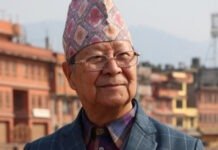He was tall. She was short.
His family was well off. Hers wasn’t.
He had not a care in the world. She worried a lot.
If you looked up mismatch in the dictionary, this couple — Martin D. Ginsburg and Ruth Bader — fit the definition perfectly. And yet in the early 1950s, on Cornell University’s bucolic campus, they fell in love.
Mostly, they fell for each other’s brains.
Listen to this story on “Retropod”:
For more forgotten stories from history, subscribe: Apple Podcasts | Stitcher | Amazon Echo | Google Home and more
Bader, the future Supreme Court justice, idolized their literature professor, Vladimir Nabokov. One day in class, Ginsburg was the only student to correctly answer Nabokov’s quiz question about Dickens. Oh, how her heart swelled. Ginsburg, in turn, admired her “intellectual luminosity.”
He was, she later said, “the only young man I dated who cared that I had a brain.”
Their remarkable and ultimately heartbreaking love story is chronicled in historian Jane Sherron De Hart’s new 722-page biography, “Ruth Bader Ginsburg: A Life.”
It lands at a time when Ruth Bader Ginsburg, 85, has become a feminist icon and pop-culture sensation with her own nickname, “the Notorious RBG,” and even an action figure. She is the subject of two new biopics, and her public appearances draw huge crowds. Hundreds of people lined up Wednesday to hear her speak at the federal courthouse in Washington, forcing organizers to set up six overflow rooms with audio and video for her eager admirers.
In recounting the courtship, marriage and careers of the Ginsburgs, De Hart keys in on perhaps the most extraordinary part of their relationship — Marty’s “proto-feminism.”
Early on in coupledom, Ruth and Marty agreed that they should pursue dual careers in law and that they would never get in each other’s way — a novel idea in the 1950s, as traditional gender roles were still evolving.
“He was an extraordinary suitor,” De Hart wrote, “a man ahead of his time. . . . Neither of them thought about social conventions concerning women’s roles.”
[The Supreme Court’s extreme makeover: How rearranging the furniture increased civility]
And their love flourished, the historian wrote:
The couple could be seen together constantly. The twosome walked around Beebe Lake only a short distance from Balch Hall on paths that other lovers had long since made smooth. The lake, resplendent in the fall against the colorful foliage of the maples, was magical in winter when frozen. On a sunny day with snow and the ice buildup on Trip-Hammer Falls sparkling in the background, it became a winter paradise. Marty’s gray Chevrolet carried the absorbed pair still farther. They drove along the narrow forty-mile shore of Cayuga Lake, aware, as Ruth put it, that they shared “an intense intellectual and emotional connection.”
Marty and Ruth married in 1954 not long after graduating. They moved to Oklahoma, where Marty took up an Army ROTC assignment at an artillery base. “After dinner, the newlyweds often spent their evenings reading aloud to each other from Pepys, Tolstoy, Dickens and even Spinoza, although the philosopher was tougher fare,” De Hart wrote.
It was in Oklahoma that the couple discovered that Marty was the better cook.
“As a general rule,” Marty told the New York Times in 1997, “my wife does not give me any advice about cooking, and I do not give her advice about the law. This seems to work quite well on both sides.”
A couple of years later, they were off to Boston to attend Harvard Law School. Marty wound up practicing tax law. Ruth took a headier path teaching constitutional law and working on women’s rights issues, racking up impressive legal victories across the country. She and Marty raised two children together.
In 1980, President Jimmy Carter appointed her to the U.S. Court of Appeals for the District of Columbia Circuit.
By the early 1990s, Ruth was pegged as a candidate for the Supreme Court — a position she deeply coveted. She also knew, as De Hart wrote, that “a potential nominee could not be perceived as promoting herself” because doing so “would have been seen as a breach of decorum.”
But that didn’t mean others couldn’t and shouldn’t lobby on her behalf.
Enter Marty, who had become a highly respected Georgetown University tax law professor.
“Marty’s effort to smooth the way for his wife’s advancement was characteristic of the couple and their relationship,” De Hart wrote. “No other campaign for a seat on the Court had been spearheaded by a male spouse.”
It wasn’t an easy task. The feminist organizations that Ruth had been closely aligned with early in her career had fractured, and some were skeptical of recent comments and decisions she had made on women’s issues. Marty was not deterred. Through intermediaries, he lobbied powerful members of the media, including New York Times columnist Anthony Lewis. On June 14, 1993, President Bill Clinton nominated her to replace retiring justice Byron R. White.
“The announcement of this vacancy,” Clinton said while introducing her, “brought forth a unique outpouring of support for distinguished Americans on Judge Ginsburg’s behalf. What caused that outpouring is the essential quality of the judge herself: her deep respect for others and her willingness to subvert self-interest to the interest of our people and their institutions.”
In closing her own remarks, Ruth turned her gaze to Marty, in the front row.
“Most closely,” she said, “I have been aided by my life’s partner, Martin D. Ginsburg, who has been, since our teenage years, my best friend and biggest booster.”
Marty died in 2010 at age 78.
[Martin D. Ginsburg dies at 78; tax law expert, Supreme Court spouse]
Cancer took him, just as it took her mother while she was in high school. Cancer has threatened Ruth, too.
Near the end of his life, Marty was admitted to Johns Hopkins Medical Center in Baltimore. Doctors had run out of options. The family decided to take him home, where he could die peacefully.
In collecting his belongings, Ruth found a legal pad with a letter addressed to her. De Hart reprinted it in her book. Marty seemed to ask for his wife’s help in ending his life:
My dearest Ruth —
You are the only person I have loved in my life, setting aside, a bit, parents and kids, and their kids. And I have admired and loved you almost since the day we first met at Cornell some 56 years ago.
What a treat it has been to watch you progress to the very top of the legal world.
I will be in JH Medical Center until Friday, June 25, I believe, and between then and now, I shall think hard on my remaining health and life, and whether on balance the time has come for me to tough it out or to take leave of life because the loss of quality now simply overwhelms.
I hope you will support where I come out, but I understand you may not. I will not love you a jot less.
Marty
He died a week later, on his own.
“In a final protective act,” De Hart wrote, “he had taken from his wife the burden of the decision.”
Read more on Retropolis:
The Supreme Court has faced momentous resignations. But Kennedy’s may be unrivaled.
The gay rights pioneer who demanded justice from the Supreme Court in 1960
LBJ’s shrewd moves to make Thurgood Marshall the nation’s first black Supreme Court justice
Thurgood Marshall asked an ex-Klan member to help him make Supreme Court history
















































